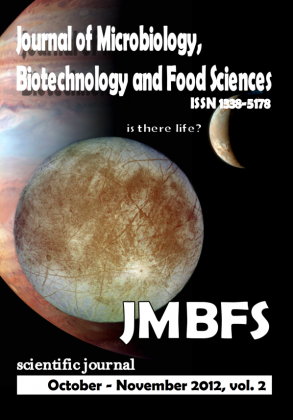CLONING, SEQUENCE ANALYSIS, AND CHARACTERIZATION OF PUTATIVE BETA-LACTAMASE OF STENOTROPHOMONAS MALTOPHILIA
Keywords:
S. maltophilia, putative beta-lactamase gene, beta-lactamase resistantAbstract
The main objective of current study was to explore the function of chromosomal putative beta-lactamase gene (smlt 0115) in clinical Stenotrophomonas maltophilia. Antibiotic susceptibility test (AST) screening for current antimicrobial drugs was done and Minimum Inhibitory Concentration (MIC) level towards beta-lactams was determined by E-test. Putative beta-lactamase gene of S. maltophilia was amplified via PCR, with specific primers, then cloned into pET-15 expression plasmid and transformed into Escherichia coli BL21. The gene was sequenced and analyzed. The expressed protein was purified by affinity chromatography and the kinetic assay was performed. S. maltophilia ATCC 13637 was included in this experiment. Besides, a hospital strain which exhibited resistant to a series of beta-lactams including cefepime was identified via AST and MIC, hence it was named as S2 strain and was considered in this study. Sequencing result showed that putative beta-lactamase gene obtained from ATCC 13637 and S2 strains were predicted to have cephalosporinase activity by National Center for Biotechnology Information (NCBI) blast program. Differences in the sequences of both ATCC 13637 and S2 strains were found via ClustalW alignment software. Kinetic assay proved a cephalosporinase characteristic produced by E. coli BL21 clone that overexpressed the putative beta-lactamase gene cloned under the control of an external promoter. Yet, expressed protein purified from S2 strain had high catalytic activity against beta-lactam antibiotics which was 14-fold higher than expressed protein purified from ATCC 13637 strain. This study represents the characterization analysis of putative beta-lactamase gene (smlt 0115) of S. maltophilia. The presence of the respective gene in the chromosome of S. maltophilia suggested that putative beta-lactamase gene (smlt 0115) of S. maltophilia plays a role in beta-lactamase resistance.Downloads
Download data is not yet available.
Downloads
Published
2012-10-01
How to Cite
Seng Shueh, C., Kumari Neela, V., Hussin, S., & Awang Hamat1, R. (2012). CLONING, SEQUENCE ANALYSIS, AND CHARACTERIZATION OF PUTATIVE BETA-LACTAMASE OF STENOTROPHOMONAS MALTOPHILIA. Journal of Microbiology, Biotechnology and Food Sciences, 2(2), 745–755. Retrieved from https://office2.jmbfs.org/index.php/JMBFS/article/view/7178
Issue
Section
Microbiology
License
Copyright (c) 2012 Chong Seng Shueh, Vasantha Kumari Neela, Salasawati Hussin, Rukman Awang Hamat1

This work is licensed under a Creative Commons Attribution 4.0 International License.
All papers published in the Journal of Microbiology, Biotechnology and Food Sciences are published under a CC-BY licence (CC-BY 4.0). Published materials can be shared (copy and redistribute the material in any medium or format) and adapted (remix, transform, and build upon the material for any purpose, even commercially) with specifying the author(s).

